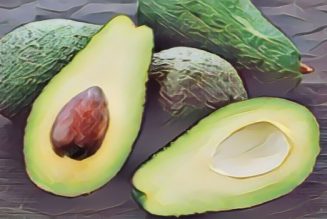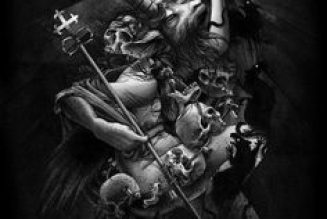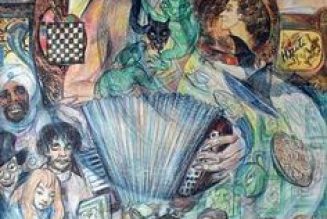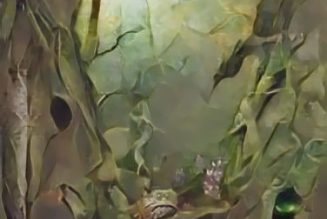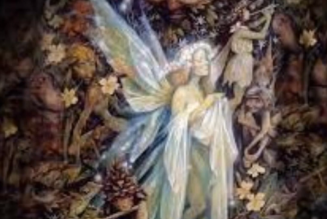In Vodun, charms or talismans kept for good luck or to ward off evil. The original gris-gris were probably dolls or images of the gods, but most gris-gris today are small cloth bags filled with herbs, oils, stones, small bones, hair and nail clippings, pieces of clothing soiled
with perspiration and/or other personal items, gathered under the direction of a particular god and designed to protect the owner.
The origin of the word is unclear, but many scholars trace it to juju, the West African name for a fetish, or sacred object. Juju may be a European translation of the native expression grou-grou (hence gris-gris), or it may refer to the French word joujou, which meant “doll” or “plaything.” Most of the African fetishes were in the shape of dolls, and early Europeans on the African West Coast may have mistaken serious religious objects for innocent-looking poppets
In New Orleans, gris-gris are common. They are made to attract money and love, stop gossip, protect the home, maintain good health and achieve innumerable other ends. Even police officers have been known to carry grisgris for protection.
A gris-gris is ritually made at an altar and consecrated with the four elements of earth (salt), air (incense), water and fire (a candle flame). The number of ingredients is always either one, three, five, seven, nine or 13 (see thirteen). Ingredients can never be even in number or number more than 13. Stones and colored objects are selected for their occult and astrological properties, depending on the purpose of the gris-gris.
Legends about the famous New Orleans Vodun queen Marie Laveau tell that her gris-gris contained bits of bone, colored stones, graveyard dust (also called goofer dust), salt and red pepper. More elaborate gris-gris might have been made of tiny birds nests or horsehair weavings.
A red-flannel bag containing a lodestone, or magnet, was a favorite gris-gris for gamblers, guaranteed to bring them good luck. Another gambler’s gris-gris was made from a piece of chamois, a piece of red flannel, a shark’s tooth, pine-tree sap and a dove’s blood. The blood and
sap were mixed together, then used to write the amount the gambler wanted to win on the chamois. The chamois was covered with the red flannel, with the shark’s tooth placed between the layers, and the whole thing was sewn together with cat’s hair. The gris-gris was to be worn in the left shoe for best, if uncomfortable, results.
Gris-gris also can be used to cause someone else bad luck, known as “putting a gris-gris” on a person. Throwing a gris-gris bag filled with gunpowder and red pepper in someone’s path or on their doorstep supposedly makes that person get into a fight. To get rid of someone,
Marie Laveau would write that person’s name on a small balloon, tie the balloon to a statue of St. Expedite, then release the balloon. The victim would depart in whichever direction the balloon flew. Just leaving a gris-gris, usually a powder, at someone’s front door tells the person he is out of favor with “the voodoos” and should watch his step.
One of Marie Laveau’s more horrible wangas, or bad luck charms, reputedly was a bag made from the shroud of a person who had been dead nine days. Into the bag went a dried, one-eyed toad, the little finger of a black person who had committed suicide, a dried lizard, bat’s wings, a cat’s eyes, an owl’s liver and a rooster’s heart. If such a gris-gris were hidden in a victim’s pillow, the unfortunate would surely die.
Many white masters in old New Orleans who mistreated their black slaves found some kind of gris-gris in their handbags or pillows, such
as a little sack of black paper containing saffron, salt, gunpowder and pulverized dog manure.
In Santería gris-gris bags are called resguardos, or “protectors.” A typical resguardo under the protection of the thunder-god Chango might contain herbs, spices, brown sugar, garlic, aloes, stones or other small sacred relics, tied up in red velvet and stitched with red thread.
Finally, the Santero attaches a tiny gold sword, the symbol of St. Barbara (Changó’s image as a Catholic saint), and if the sword breaks, Changó has interceded on the owner’s behalf.
Gurunfindas are talismans prepared by Santería’s black witches, the mayomberos, to ward off evil from themselves and direct it magically to others. To make a gurunfinda, first the mayombero hollows out a guiro, a hard, inedible fruit found in the tropics, and fills it with the
heads, hearts and legs of a turtle and various species of parrots; the tongue and eyes of a rooster; and seven live ants. Next, the mayombero adds seven teeth, the jawbone and some hair from a cadaver, along with the cadaver’s name on a piece of paper, and seven coins to pay the dead spirit for his services. Then, the mayombero pours rum over the mixture and buries the guiro beneath a sacred ceiba tree for 21 days. When he disinters the guiro, the mayombero marks the outside of the fruit with chalk and then hangs the charm from a tree near his home.
